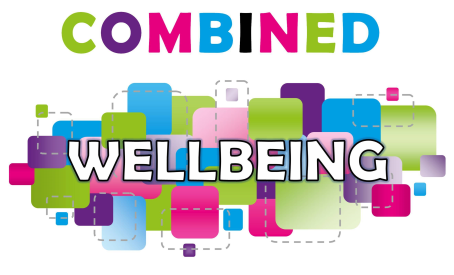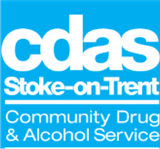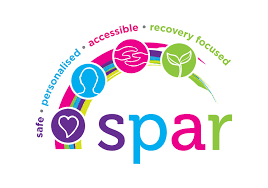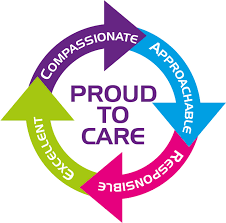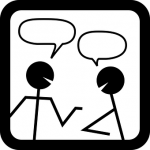Drugs

Information
Cutting back on illicit and non-prescribed drug taking can improve mental and physical wellbeing.
There are plenty of practical ways to start to change your drug taking behaviours and stay on track. When reducing your drug intake it’s important to know how to start reducing it safely and how to stay motivated to keep going.
Select the underlined questions below to see more.
The effects of drug use can vary significantly from person to person. Existing health conditions, the use of multiple illicit drugs, or interactions with prescription and over-the-counter medications can all influence how an individual responds to a substance.
Alcohol and Heroin
Combining alcohol with heroin can severely depress the central nervous system. This can slow breathing and heart rate to the point of complete respiratory failure — leading to sudden death. Even small amounts taken together can be fatal.
Alcohol and Cocaine
Mixing alcohol with cocaine is especially dangerous. This combination produces a toxic chemical in the liver called cocaethylene, which increases the risk of sudden death and causes serious damage to the liver and cardiovascular system.
Heroin and Methadone
Using heroin while taking methadone is extremely risky. Methadone is a long-acting opioid prescribed to support recovery and combining it with heroin significantly raises the risk of overdose. If you feel your medication isn’t managing your symptoms, do not increase your dose on your own — instead, speak to your prescriber or local drug service. They can review your treatment and adjust it safely if needed.
Mixing Any Drugs and Alcohol
Combining drugs — whether prescription, illegal or alcohol — can lead to unpredictable and sometimes lethal effects. The risks include permanent organ damage, coma or death. It’s essential to understand the interactions and seek help if you’re struggling with substance use.
Within the following ‘Coping with’ section basic advice is provided to help you to reduce risks. There are some helpful websites that provide more in-depth information about various drugs and further information around alcohol misuse. You can find these within the ‘Finding help’ and ‘Getting more help’ sections
Health Risks of Regular Cannabis Use
- Mental health effects: Regular cannabis use can negatively impact your concentration, memory and motivation. It may also trigger or worsen mental health problems, including panic attacks, anxiety, paranoia, and, in some cases, aggression or violence.
- Youth risk: Cannabis use is especially harmful for young people, as the brain is still developing. Heavy use during adolescence can have long-term effects on thinking and emotional regulation.
- Motivation loss: Frequent use is linked with reduced drive or motivation
Cannabis withdrawal symptoms
If you’ve been using cannabis regularly and decide to stop or cut down, withdrawal symptoms are likely. These symptoms are a sign your body is healing, and they usually improve within a few weeks.
Withdrawal Symptoms:
- Low mood and cravings
- Sleep problems or strange dreams
- Anxiety and restlessness
- Irritability and anger
- Sweats, chills and headaches
- Changes in appetite or nausea
- Nicotine withdrawal (if cannabis was smoked with tobacco)
How Long Do Symptoms Last?
- Symptoms usually peak around day 4 after quitting.
- Most people feel better after 10 days, though some symptoms can persist for up to four weeks, due to THC being stored in fat cells and released gradually.
Managing Cannabis Withdrawal: Practical Tips
Sleep Problems
You may find it hard to sleep at first. Tips for improving sleep:
- Stick to a regular sleep schedule
- Develop a calming bedtime routine (e.g., warm bath, reading, light TV)
- Avoid screens before bed
- Get outside and stay active during the day
Anxiety and Restlessness
Cannabis may have masked anxiety. Without it, anxiety can feel more intense:
- Avoid caffeine
- Try breathing exercises
- Write down your worries
- Stay busy with calming activities
Irritability and Anger
These are normal and temporary:
- Reduce stress and build in relaxing activities
- Talk to someone you trust
- Practice patience with yourself
Sweats and Chills
Treat these like you would flu symptoms:
- Rest and stay warm
- Drink fluids
- Use over-the-counter pain relief like paracetamol or ibuprofen
Changes in Appetite
Food might taste different or your appetite may drop:
- Eat small meals regularly
- Try smoothies if you can’t eat
- Fresh air and light exercise can help improve appetite
Nicotine Withdrawal
If you mix cannabis with tobacco, you’ll also experience nicotine withdrawal:
- Symptoms include irritability, cravings and poor concentration
- Use nicotine replacement therapy (patches, gum, lozenges)
- Avoid vapes or anything resembling smoking, as it could trigger relapse
Getting Help
Withdrawal and recovery are challenging, but support is available. If you’re finding it hard to manage, reach out to your local drug and alcohol service.
If you live in Stoke-on-Trent:
📞 Call Stoke CDAS – 01782 283113
🌐 Visit: scdas.org.uk
If you live in North Staffordshire:
📞 Call STARS – 0300 124 0356
🌐 Visit: Homepage – Staff Stars
Heroin Risks, Tolerance and Withdrawal – Understanding the Risks of Heroin Use
- Regular heroin use leads to the development of tolerance, meaning that over time you need more of the drug to feel the same effects.
- Danger of relapse: If you stop using heroin for even a few days, your tolerance drops significantly. Using the same amount, you took before can cause overdose — often fatal.
- Sedative effects: Heroin sedates the central nervous system, increasing the risk of vomiting while unconscious. If this happens, you may be unable to cough or clear your airway, leading to asphyxiation and death.
Understanding Drug Tolerance
- What is drug tolerance? It’s when the body becomes less responsive to a substance over time, requiring higher doses to achieve the same effect.
- Tolerance means the body is desensitised to a drug’s effects, while addiction includes chemical dependence and psychological cravings.
- Risk: As tolerance builds, people may take dangerously large doses, increasing the risk of overdose and death.
- Tolerance also decreases with non-use, making relapse especially dangerous.
Heroin Withdrawal Symptoms
Stopping or reducing heroin after becoming dependent can lead to opioid withdrawal, which is often uncomfortable and challenging to manage alone.
Common Withdrawal Symptoms:
- Nausea and vomiting
- Diarrhoea
- Insomnia
- Anxiety
- Muscle and bone pain
- Racing heart
- Sweating and chills
- High blood pressure
- Increased body temperature
These symptoms can be intense and often lead to a cycle of stopping and restarting use to relieve discomfort.
Why Withdrawal Happens
- Opioids like heroin affect the brain’s pain and reward systems.
- Over time, the brain relies on heroin to function normally.
- When you stop, the body struggles to adapt, leading to withdrawal symptoms.
Even prescribed opioids can cause dependence over time. That’s why it’s vital to work with your GP or local drug services to safely manage and review your medication. Staying on treatment longer than necessary may also create dependence.
How Long Does Heroin Withdrawal Last?
- Heroin is a short-acting opioid. Withdrawal can begin 8–12 hours after last use.
- Symptoms peak between 1–3 days and usually subside by day 7.
The intensity and duration vary depending on the individual, how long they’ve been using and the amount used.
Important Safety Reminder
Taking heroin — especially after a period of abstinence — can be deadly. Overdose signs include extreme drowsiness, shallow breathing, loss of consciousness and vomiting. If someone is unresponsive and may have overdosed, call emergency services immediately.
Need Help? You’re Not Alone
Professional help and treatment options are available to support your recovery. Don’t wait until it’s an emergency.
If you live in Stoke-on-Trent:
📞 Call Stoke CDAS – 01782 283113
🌐 Visit: scdas.org.uk
If you live in North Staffordshire:
📞 Call STARS – 0300 124 0356
🌐 Visit: Homepage – Staff Stars
Health Risks of Cocaine Use
1. Physical Damage:
- Snorting Cocaine: Repeated snorting can damage the cartilage in your nose (the septum), potentially leading to misshapen nostrils and chronic nasal issues.
- Smoking Crack Cocaine: Increases the risk of serious lung problems such as breathing difficulties and Chronic Obstructive Pulmonary Disease (COPD).
2. Mental Health Risks:
- Cocaine use can worsen existing mental health conditions.
- It can induce psychosis, leading to delusions, paranoia and erratic behaviour.
- Users often experience severe mood swings, anxiety, panic attacks and depression, especially during withdrawal.
3. Pregnancy Risks:
- Using cocaine during pregnancy can result in miscarriage, premature labour and serious health complications for the baby after birth.
4. Risk of Overdose:
- Cocaine use increases dopamine levels, causing intense euphoria. This often leads to repeated use (bingeing), which increases the risk of overdose and death.
- Speed balling (injecting cocaine with heroin) is particularly dangerous and significantly raises the chance of a fatal overdose.
Cocaine Withdrawal Symptoms
Cocaine use alters your brain’s ability to produce dopamine naturally. Over time, users rely on the drug just to feel “normal.” When you stop using, the brain struggles to adjust, leading to withdrawal symptoms.
Common Withdrawal Symptoms:
- Intense cravings
- Fatigue and lack of energy
- Increased appetite
- Depression
- Agitation and irritability
- Restlessness
- Anxiety and panic
- Vivid nightmares
- Suicidal thoughts (seek medical help immediately if this occurs)
Cocaine Withdrawal Timeline
First 1–3 Hours:
- Symptoms begin quickly after the last dose.
- You may feel exhausted, anxious, irritable and hungry.
- Surprisingly, cravings may temporarily decrease during this phase.
Week 1:
- Strong cocaine cravings return.
- Trouble sleeping, vivid bad dreams and intense mood swings are common.
Weeks 2–4:
- Emotional instability, ongoing cravings and difficulty focusing.
- Depression may persist or intensify.
Weeks 5–10:
- The brain begins to recover.
- Symptoms reduce, but occasional cravings and anxiety may still appear.
Important Advice:
Withdrawal from cocaine can be physically and emotionally challenging, and in some cases, dangerous. If you’re experiencing:
- Severe depression
- Thoughts of self-harm or suicide
- Intense cravings that feel uncontrollable
Seek medical support or addiction services immediately.
Need Help? You’re Not Alone
Professional help and treatment options are available to support your recovery. Don’t wait until it’s an emergency.
If you live in Stoke-on-Trent:
📞 Call Stoke CDAS – 01782 283113
🌐 Visit: scdas.org.uk
If you live in North Staffordshire:
📞 Call STARS – 0300 124 0356
🌐 Visit: Homepage – Staff Stars
Amphetamine Risk
Amphetamines (commonly known as “speed”) can put additional strain on your heart. If you have underlying medical conditions such as high blood pressure or a heart condition, using amphetamines significantly increases the risk of complications or even death.
Regular use of amphetamines can weaken the immune system, making you more susceptible to colds, flu, and other infections. Many of the risks associated with amphetamine use are like those linked with cocaine.
Amphetamine Withdrawal Symptoms
Long-term amphetamine use can lead to physical and psychological dependence. Abruptly stopping or drastically reducing the dose can trigger withdrawal symptoms. This is known as amphetamine withdrawal syndrome, which can be challenging to manage without support.
Common Withdrawal Effects Include:
- Depression
- Fatigue
- Irritability
- Anxiety
- Difficulty concentrating
- Increased appetite
In severe cases, withdrawal can seriously impact mental health, leading to suicidal thoughts or profound depression. An initial “crash” lasting 1–2 days is often followed by a withdrawal phase that may continue for 5 days to several weeks.
Symptoms and Effects of Amphetamine Withdrawal
- Fatigue and excessive sleepiness
- Increased appetite
- Muscle twitches or unusual movements
- Slowed movements or reaction times
- Body aches and pains
- Irritability or agitation
- Vivid or disturbing dreams
- Depression
While amphetamine withdrawal is not usually life-threatening, it can be intensely uncomfortable and may trigger relapse. Medical detox under the supervision of a healthcare professional is strongly advised, as it can ease symptoms and provide a structured treatment plan.
Withdrawal Factors
Several factors influence the onset, severity, and duration of withdrawal symptoms:
- Length of time amphetamines have been used
- Dosage and frequency at the time of last use
- Use of other substances
- Physical and psychological health conditions
- Biological factors (age, gender, genetics, weight, metabolism)
Post-Acute Withdrawal Symptoms (PAWS)
When symptoms persist beyond two weeks, they may be classified as Post-Acute Withdrawal Symptoms. In long-term users, PAWS can last several months or even up to a year.
PAWS Symptoms May Include:
- Short-term memory issues
- Difficulty concentrating
- Poor impulse control
- Depression (with or without suicidal thoughts)
- Inability to feel pleasure (anhedonia)
- Drug cravings
- Chronic fatigue
- Sleep disturbances
- Unexplained physical symptoms
If you’re experiencing any of these symptoms, consult a healthcare professional. Supportive medications and therapeutic interventions can improve recovery and reduce relapse risk.
Common Withdrawal Timeline
Days 1–2:
- Symptoms usually begin within 36 hours of last use.
- Common symptoms: depression, excessive sleep, increased appetite and cravings (the “crash” phase).
Days 3–14+:
- Continued symptoms: mood swings, sleep issues, body aches, irritability, cravings and fatigue.
Weeks to 1 Year (PAWS):
- Persistent psychological effects in chronic users- including depression, memory issues and anhedonia.
Medical Complications
Although rare, amphetamine withdrawal can sometimes lead to medical emergencies:
- Irregular heartbeat or chest pain
- Seizures
- Severe headaches (potential signs of brain bleeding)
- Complications from simultaneous withdrawal from other substances
If you experience any of these symptoms, seek emergency medical attention immediately. Timely intervention could be lifesaving and supports a safer recovery process.
Need Help? You’re Not Alone
Professional help and treatment options are available to support your recovery. Don’t wait until it’s an emergency.
If you live in Stoke-on-Trent:
📞 Call Stoke CDAS – 01782 283113
🌐 Visit: scdas.org.uk
If you live in North Staffordshire:
📞 Call STARS – 0300 124 0356
🌐 Visit: Homepage – Staff Stars
Monkey Dust (MDPV):
Monkey Dust is a synthetic cathinone and belongs to a class of drugs known as New Psychoactive Substances (NPS). These are unregulated psychoactive compounds designed to mimic the effects of controlled substances but without any recognized medical use.
What is Monkey Dust?
The primary active ingredient in Monkey Dust is methylenedioxypyrovalerone (MDPV). As a powerful stimulant, MDPV affects the central nervous system, often leading to intense psychoactive effects. Street formulations of Monkey Dust may also contain harmful additives or other synthetic chemicals.
How Does Monkey Dust Work?
Monkey Dust works by binding to dopamine, norepinephrine and serotonin transporters in the brain, blocking their reuptake. This causes a buildup of these neurotransmitters, leading to overstimulation—similar to the mechanism of drugs like cocaine.
Common Short-Term Effects
Monkey Dust may initially produce feelings of:
- Euphoria
- Increased energy and alertness
- Heightened sensory perception (e.g., brighter colors, louder sounds)
- Increased empathy
However, these effects are often accompanied by dangerous side effects such as:
- Tachycardia (rapid heart rate)
- Hypertension (high blood pressure)
- Vasoconstriction (narrowed blood vessels)
- Excessive sweating
- Panic attacks
- Anxiety and paranoia
Withdrawal Symptoms and Long-Term Risks
Regular use of Monkey Dust can lead to tolerance, dependence and ultimately addiction. Long-term use is associated with:
- Psychosis
- Sleep disturbances
- Fatigue
- Aggression
- Intense cravings
Monkey Dust Withdrawal Timeline
- Immediate effects: 2–3 hours
- Adverse effects: 6–8 hours
- Withdrawal symptoms: Can begin within hours and last several days, depending on usage history
Risks of Monkey Dust Use
- Increased risk of violent or self-destructive behaviour
- Higher chance of engaging in polydrug use (mixing with other substances or alcohol)
- Elevated risk of overdose
- Potential for long-term psychological damage
Get Help
If you or someone you know is struggling with Monkey Dust use, it’s important to seek professional support immediately. Early intervention can reduce the risk of long-term harm. Please contact your local addiction services or healthcare provider for help.
If you live in Stoke-on-Trent:
📞 Call Stoke CDAS – 01782 283113
🌐 Visit: scdas.org.uk
If you live in North Staffordshire:
📞 Call STARS – 0300 124 0356
🌐 Visit: Homepage – Staff Stars
Ketamine Misuse
Ketamine is a powerful dissociative anaesthetic used medically for pain relief and sedation. While it has legitimated clinical applications, it is increasingly misused for its hallucinogenic and euphoric effects, especially in recreational settings.
When used outside of medical supervision, ketamine can cause serious mental and physical health risks, including addiction, cognitive damage and long-term urinary problems.
What Is Ketamine?
- Medical Use: Ketamine is used in hospitals and veterinary settings for anaesthesia and pain relief. In some cases, it’s prescribed in controlled doses to treat treatment-resistant depression.
- Street Names: Special K, K, Kit Kat, Super Acid, Cat Valium.
- Forms: Usually found as a white powder, tablets or liquid for injection. Recreational users typically snort or inject it or mix it into drinks.
How Does Ketamine Work?
Ketamine blocks the NMDA receptor in the brain, which interferes with the transmission of pain signals and causes a dissociative state. This can lead to hallucinations and out-of-body experiences.
At higher doses, users may enter what is known as a “K-hole”, a state of extreme dissociation that may feel like being detached from the body or reality.
Short-Term Effects of Ketamine Misuse
Ketamine may initially cause:
- Feelings of euphoria
- Hallucinations or dream-like states
- A sense of detachment from body and environment
- Altered perception of time and space
However, misuse can also result in:
- Nausea and vomiting
- Slurred speech
- Blurred vision
- Confusion and agitation
- Paranoia and anxiety
- Memory problems
- Risky or unpredictable behaviour
- Respiratory issues or unconsciousness (especially with high doses)
Long-Term Effects of Ketamine Misuse
Chronic misuse of ketamine can lead to:
- Cognitive impairment (problems with memory, attention and decision-making)
- Urinary tract damage, including ketamine bladder syndrome (incontinence, pain and bleeding)
- Liver and kidney problems
- Persistent psychological issues such as anxiety, depression or psychosis
- Addiction and dependence
Ketamine Withdrawal Symptoms
Although ketamine is not typically associated with severe physical withdrawal, psychological dependence can be intense. Symptoms may include:
- Cravings
- Fatigue
- Depression
- Anxiety
- Trouble sleeping
- Irritability
Risks of Polydrug Use and Overdose
Ketamine is often used alongside alcohol, MDMA or other substances—greatly increasing the risk of:
- Accidents and injuries due to lack of coordination or awareness
- Respiratory depression
- Overdose or unconsciousness
- Dangerous interactions with depressants or stimulants
How Long Do the Effects Last?
- Onset: 5–30 minutes (depending on method of use)
- Duration of effects: 45 minutes to 1.5 hours
- Residual effects (e.g. confusion, low mood): May last several hours
Get Help for Ketamine Misuse
If you or someone you care about is struggling with ketamine misuse, you’re not alone—and help is available. Recovery is possible with the right support
If you live in Stoke-on-Trent:
📞 Call Stoke CDAS – 01782 283113
🌐 Visit: scdas.org.uk
If you live in North Staffordshire:
📞 Call STARS – 0300 124 0356
🌐 Visit: Homepage – Staff Stars
Other Drugs:
The misuse of illicit substances or the non-medical use of prescription drugs poses serious risks to your physical and mental health. These “other drugs” may include a wide variety of substances such as:
- Cannabis
- MDMA (Ecstasy)
- LSD and other hallucinogens
- Benzodiazepines (Valium, Xanax)
- Inhalants (glue, gas, aerosols)
- New Psychoactive Substances (NPS), including synthetic cannabinoids and cathinones
Each drug affects the body differently, but all can lead to addiction, mental health problems and physical harm.
Why People Use Drugs
People may use drugs recreationally, socially, to cope with stress or trauma, or because of peer pressure. However, even occasional use can carry significant risks—especially when drugs are mixed or taken in high doses.
Short-Term Effects of Drug Misuse
Depending on the substance, users may experience:
- Euphoria or a “high”
- Increased energy or sociability
- Relaxation or sedation
- Altered perceptions or hallucinations
- Pain relief
However, these effects can be accompanied by:
- Panic attacks, anxiety, or paranoia
- Nausea and vomiting
- Aggression or risky behaviour
- Confusion or disorientation
- Overdose or poisoning
- Accidents or injury due to impaired judgment
Long-Term Effects of Drug Misuse
Long-term drug misuse can lead to serious and often irreversible health issues:
- Addiction and dependence
- Liver, kidney or lung damage
- Heart problems
- Memory loss and cognitive decline
- Chronic mental health issues (depression, psychosis, anxiety)
- Relationship breakdowns, legal problems, and job loss
- Increased risk of infections (e.g., HIV, hepatitis) from injecting drugs
Polydrug Use
Mixing drugs—or combining drugs with alcohol—increases the risk of:
- Overdose
- Respiratory failure
- Heart attack or stroke
- Unconsciousness or death
Even drugs considered “safe” or “natural,” like cannabis or mushrooms, can become dangerous when mixed with other substances.
Withdrawal and Dependence
Some drugs lead to physical dependence (e.g., opioids, benzodiazepines), while others cause psychological dependence (e.g., cannabis, MDMA). Withdrawal symptoms may include:
- Cravings
- Sweating and shaking
- Insomnia
- Mood swings or depression
- Fatigue and confusion
- Seizures (in severe cases)
Getting Help
Drug misuse can feel isolating—but support is available. The earlier you seek help, the more effective your recovery can be.
You can reach out to:
- A GP or healthcare professional
- Local drug and alcohol recovery services
- Mental health support teams
- Confidential helplines or online support groups
You Are Not Alone
Recovery is possible. Whether you’re concerned about your own drug use or someone else’s, taking that first step—talking to someone—can make all the difference.

Finding help
Who can they talk to?
- Friends
- Family
- GP
- Healthcare Professionals
- Local Drug and Alcohol Services
- Charities and Helplines
- Peer Support Groups
Select the underlined topics below to view what resources are available.
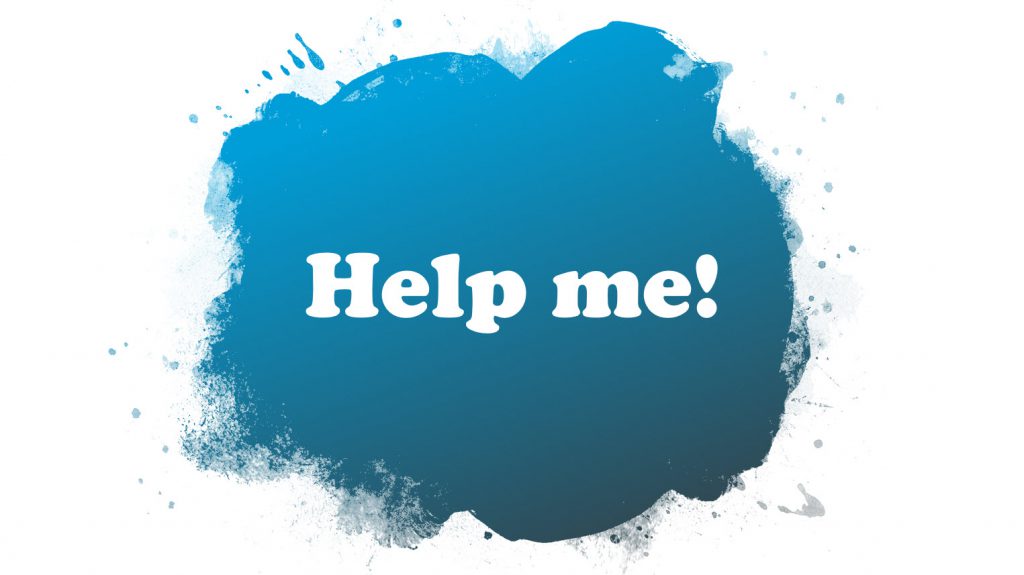
Getting more help
If you haven’t already found the help you’re looking for, you can find additional information and services which are more interactive here.
